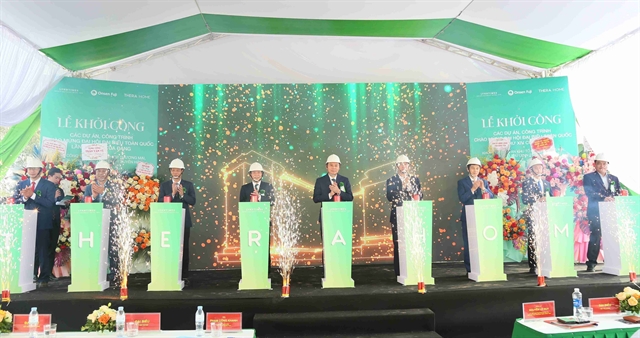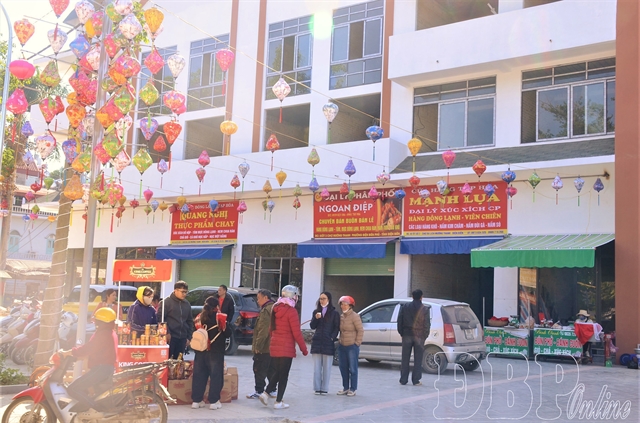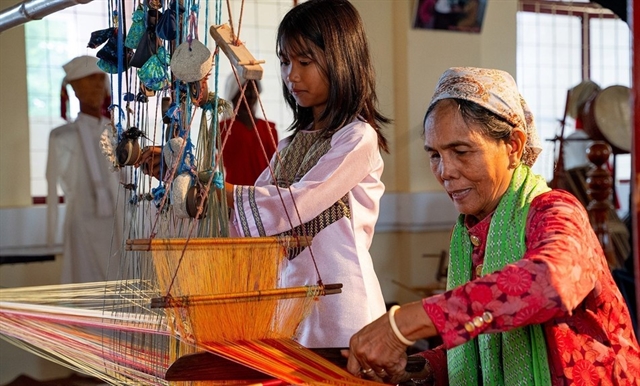 Features
Features

In recent years, provincial authorities have paid attention to reducing poverty among the southern Khmer people, while preserving and upholding the diversity of their traditional culture. Ngọc Diệp writes.
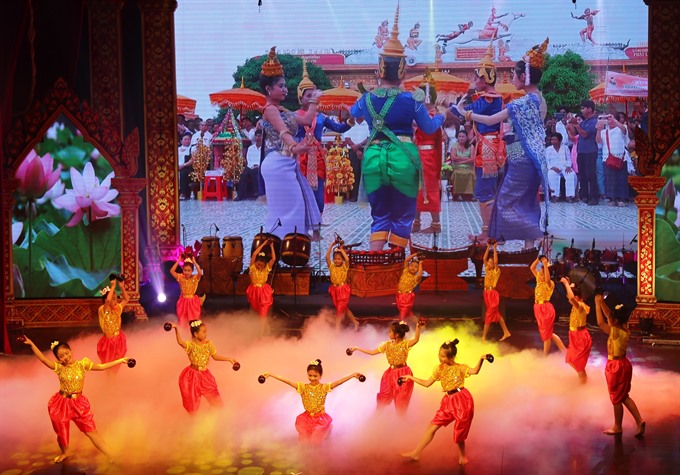 |
| Another world: Children perform Khmer traditional dances at the seventh southern Khmer cultural festival in Bạc Liêu City. — VNS Photo Ngọc Diệp |
by Ngọc Diệp
“The unique colours of Khmer culture are part of the rich variety among the 54 nationalities who live in Việt Nam,” Đặng Hùng, head of the Bạc Liêu Province’s Union of Associations for Literature and Arts, said this week.
In recent years, provincial authorities have carried out Government policies on ethnic affairs by reducing poverty and improving the livelihoods of the southern Khmer and preserving the diversity of their traditional culture.
One of the most important events of the year is the province’s Khmer Festival of Culture, Sport and Tourism, held at Bạc Liêu from November 17-19. It attracted more than 2,000 artists and dancers from 12 southern provinces and cities.
During the festival, the distinctiveness of the Khmer ethnic culture was on full display, having been preserved from generation to generation for more than 2,000 years.
Srey Khmau, 21, an artist from Trà Vinh University’s art troupe, took part in an art performance for the first time, but not for the glory or an award. “Khmer ancient traditions and culture give me great pride. I’m very happy that our traditional values are respected and promoted,” she said.
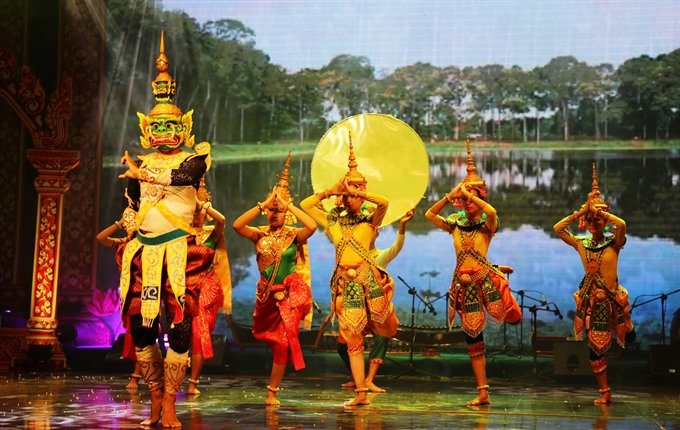 |
| An art performance expresses typical Khmer culture from Trà Vinh Province. — VNS Photo Ngọc Diệp |
Among the activities at the three-day event were exhibitions of the culture of the Khmer community, costume shows, performances of Khmer art troupes, culinary competitions and traditional sport competitions from 12 southern provinces.
Besides Khmer dances, musical performances and folk singing at pagodas and during the festival, young artists from Sóc Trăng Province revived the Pithi Chol mlốp marriage rite, attracting many visitors.
In earlier times, Khmer girls married only after completing a rite called Pithi Chol mlốp, which means “stay in shape”. Today, the rite is generally not performed, but young Khmer artists who want to preserve the tradition express the significance and meaning through their performances.
The restoration of Pithi Chol mlốp rite helps young Khmer avoid mistakes before marriage. A girl takes part in the rite when she has her first menstrual period. It is done for girls who know little about their bodieds or understand why certain physical changes are occurring.
The Pithi Chol mlốp period lasts from around three months to one year, depending on each girl’s progress. The girls are not allowed to leave their private house and meet strangers, especially men. If there is a need to go out, they must cover their faces.
The girls learn housework skills (cooking, weaving, and embroidery), communication skills, good behaviour, social responsibility and how to keep their souls “beautiful”. According to ancient Khmer customs, it is difficult for a girl to find a husband if she does not take part in the rite.
 |
| Mother guides her daughter on how to use a weaving loom and spinning wheel during the Pithi Chôl mlốp period. — VNS Photo Ngọc Diệp |
Traditional costumes express the features and religious beliefs of the Khmer. They are decorated with different motifs and patterns, requiring fine tailoring skills and designs.
The costume for Khmer women is the sampet chon kpal, a special dress made from a wide fabric wrapped around the body and passed between the legs to make short, puffy pants.
Khmer women wear skirts decorated with motifs of oval inlays, flowers and stripes. The dresses are worn with shorts and a close shirt, with open neck and short sleeves.
The daily costume of women is similar to the Vietnamese ethnic majority Kinh’s áo bà ba (a blouse worn by southerners) and khăn rằn (striped scarf) on the head or shoulders.
The traditional costume of Khmer men is a sarong, a long piece of delicately embroidered cloth. They also often wear sarongs and black blouses.
Today, Khmer only wear traditional costumes on special occasions, such as art performances, ceremonial rites, wedding ceremonies, and festivals.
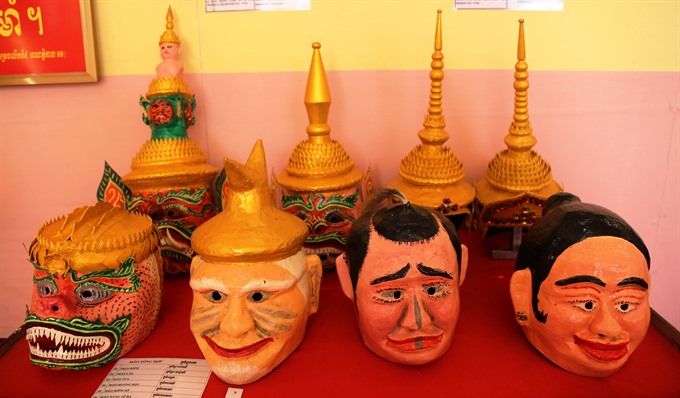 |
| Specific colours and patterns of mão (traditional hats) and masks are used in Khmer art performances. — VNS Photo Ngọc Diệp |
Unusual hats and masks are an indispensable part of traditional costumes. The hats are designed in the shape of heads and sacred animals.
The craft requires a thorough understanding of Khmer culturel. All of the work is done by hand and requires patience, creativity and care in every detail.
There are about 1.3 million ethnic Khmers living in southern Việt Nam, accounting for seven per cent of the region’s population, ranking second to the Kinh (ethnic Vietnamese).
They reside in the Mekong Delta provinces of Trà Vinh, Sóc Trăng, Kiên Giang, An Giang, Bạc Liêu, Vĩnh Long, and Cần Thơ City.
Most Khmer are Theravadan Buddhists and show deep respect to Buddhist monks. Pagodas are the most sacred and important places in their spiritual life.
Thạch Ri Cơn, 29, from Trà Vinh’s Trà Cú District, said southern authotities had helped local people improve their incomes and promoted their spiritual life by providing favourable conditions to preserve their traditional culture and to practise their religion. “Our life now is much better than in the past. We live in love and peace. We are free to preserve our own cultural characteristics,” he said.
Through the architecture of the pagodas, Khmer artisans have preserved the tenets of their Buddhist faith, which inspires them to do good things.
Some Khmer pagodas were built centuries ago and are recognised as national cultural and architectural relics. They are used for communal activities, festivals, and folk culture training classes.
Young Khmer men must spend a period as monks to foster knowledge and values. If they do not complete their classes, they are not recognised as adults.
During their time in pagodas, the young men learn Buddhism and write and speak Khmer, contributing to the preservation of the Khmer language and traditional culture. The ashes of many Khmer are preserved in pagodas after death.
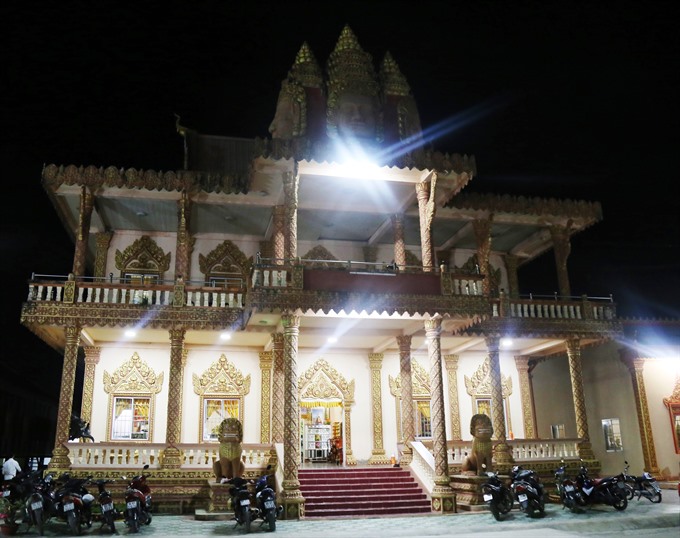 |
| Xiêm Cán Pogada in Bạc Liêu Province is a splendid Khmer architectural work in southern Việt Nam. — VNS Photo Ngọc Diệp |
Xiêm Cán Pagoda, one of the biggest and most splendid in the south, was built in 1887. It is covered by walls with decorative images of snake genies and eye-catching motifs. Its east gate is painted dark yellow and red, typical colours for the Khmer.
Each year, more than 10 festivals are held, including the three principal ones: the Ok Oom Bok (long boat race), Sen Đôn-ta (worship of the moon), and Chôl Chnăm Thmây (New Year).
To help them celebrate the November festival this year, the Bạc Liêu Provincial People’s Committee granted VNĐ250 million (US$11,004 ) to upgrade traditional Khmer long boats and pentatonic musical instruments.
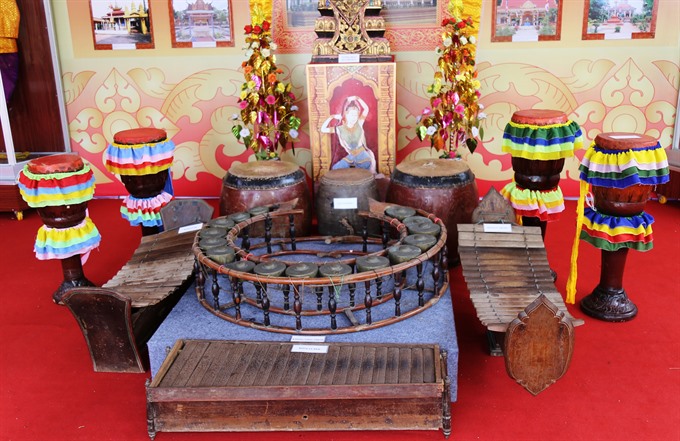 |
| Traditional Khmer pentatonic musical instruments.— VNS Photo Ngọc Diệp |
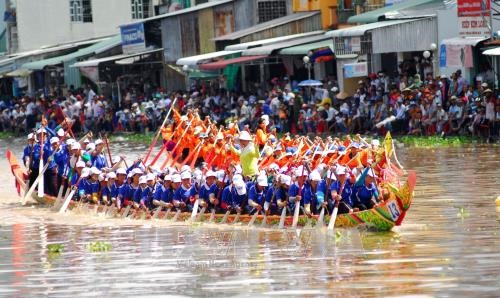 |
| A Ghe Ngo (Khmer traditional long boat) race in the Cửu Long (Mekong) province of Bạc Liêu, held on November 17. — VNA/VNS Photo Mạnh Linh |
In September, following a Prime Ministerial decision on land and employment policies for ethnic people in the Mekong Delta region, Trà Vinh Province allocated more than VNĐ36 billion ($1.58 million) to provide residential land for 1,474 poor Khmer households.
In 2022, the eighth festival will feature the sports, culture and tourism traditions of the southern Khmer in Sóc Trăng. It will be hosted every five years in one of the southern provinces. VNS

